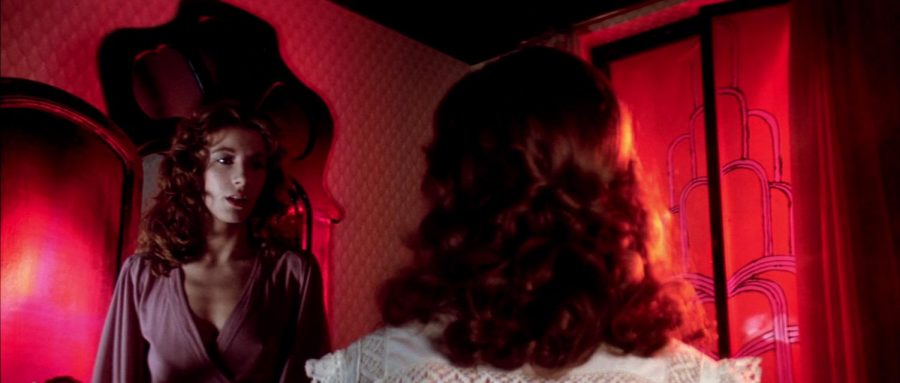Horror Classics: Suspiria, a colorful mind trip of a classic
As a staple of the Italian horror genre giallo, the film Suspiria allures audiences with its phantasmagoric set design, gory practical effects, and tormenting score.
October 13, 2018
For the month of October, each Saturday, the DI Arts team will look at the horror classics that shaped us as consumers of the spooky genre. Spoilers below, but if you haven’t seen it by now, that one is on you.
Come hear the sighs from the depths. With Luca Guadagnino’s homage out in a matter of weeks, Halloween just around the corner, and the Witching Hour Festival upon us, the time is ripe to watch Dario Argento’s Suspiria in Iowa City.
The film follows American ballet student, Suzy Bannion (Jessica Harper), who transfers to a renowned German dance academy but quickly realizes that its staff and instructors aren’t too friendly. Throughout the film’s 98 minutes, Suzy takes on the role of detective, investigating a series of gruesome crimes and supernatural occurrences that ultimately lead her to uncover the sinister underbelly of the institution.
In Suspiria, Argento orchestrates a synesthetic symphony of sound and vision that hypnotizes viewers with its charms. Inspired thematically by Thomas De Quincey’s essay Suspiria De Profundis, the film masterfully translates the narcotic and hallucinogenic ethos of its source material. Suzy wades her way through Argento’s macabre funhouse, struggling to find the answers that lie in his stylistic murk.
Argento’s got a lighting fetish, and he wants you know about it. There isn’t a single scene that doesn’t feature bedazzling and didactic use of color; red and blue-filled sets clash against each other, reflecting the manichean battle between good and evil that Suzy finds herself jettisoned into.
He’s also quite fond of symmetry, casting an illusion of order over the madhouse of the academy. Argento’s gruesome practical effects are another highlight and an indisputable influence on the subsequent films of David Cronenberg and other body-horror directors. However, the hysterical circumstances that precede these effects make them come off more campy than scary. The poor audio dubbing also gets in the way of the seriousness at first but soon becomes less of a distraction.
The pacing of Suspiria only further amplifies the tumult. Argento doesn’t let the audience’s attention wander for a second; blink, and you just might miss the rapid-fire plot unfold, the last event always running upon the next one’s heels. While the speed of action in the film sits comfortably at home with the other elements on display, Suspiria suffers toward the end with a rather rushed resolution.
It would be criminal not to mention the soundtrack by Italian prog-rock group Goblin, which was composed before the group had seen the film. The title theme calls to mind Mike Oldfield’s Tubular Bells, made famous for its use as the main theme for William Friedkin’s The Exorcist. However, Goblin’s soundtrack takes a more anxious and haunting approach. As the film tends to, the soundtrack leans more toward thriller than horror; jazzy interludes and synth arpeggios hurry along, occasionally interrupted by pulsing dulcimer sections and eirie chants. Argento’s film benefits immensely from the group’s contribution; without Goblin’s speedy rhythms and daunting melodies, Suspiria loses a critical dimension to its unique style and presentation.
Suspiria is a 98-minute mind trip of a movie. Its influence has cast a large shadow over subsequent body-horror films and certainly the horror genre as a whole. It has wiggled its way into various pop-culture references, from “The Office” and Juno and into the lyrics of a score of gothic-metal groups. It’s no wonder Guadagnino, director of the much lauded Call Me By Your Name, has set his sights on remaking the classic for his next venture.



